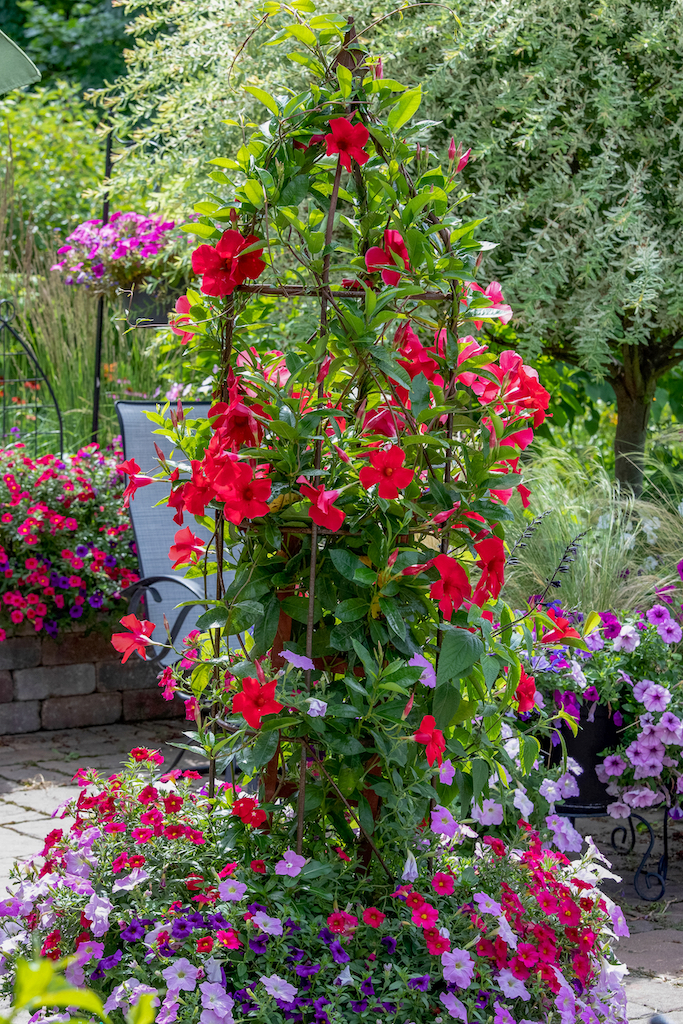Mandevilla, especially the long vining types, are excellent climbers, but you can still help it find the trellis or arbor. Use biodegradable twine and tie a loose loop around the support and the vine, then gently twist the vine around the support structure. Tie a loop with some extra space, and you won’t have to remove it later.
Mandevilla enjoys moist soil, but allow the top inch or two to dry out between waterings. Too much water can provide ideal conditions for root rot, even in tropical plants.
A general-purpose or bloom-booster slow-release fertilizer applied in early summer will meet any feeding needs for the season.
Overwintering Mandevilla
Mandevillas can be expensive, and buying new ones every year adds significantly to the cost of the spring garden center run. Fortunately, with some care, you can overwinter these beauties and enjoy them again next year.
Mandevillas have a natural dormant period from late fall into April. They’ll stop growing and may even drop their leaves, but don’t panic.
You’ll want to give your mandevilla a pretty drastic haircut before bringing it inside for the winter. Trim it back to about 12 inches from the base. It will look like savagery, but the alternative is cleaning up all that mess inside your house when it gets dropped anyway.
Once you’ve trimmed it back with your clippers, bring it inside and store it in a basement, garage, or other cool location. You’ll need a location that doesn’t dip below about 45F. If you don’t have one, you can store it in an out-of-the-way location in the house, but the cooler, the better.
In mid-spring, bring your mandevilla out of storage and place it in a warm location with bright light. A sunny south-facing window will be fine. Check the soil moisture and add water if dry, but don’t go overboard. The plant takes a while to “wake up” and won’t use much water until it does.
Set your mandevilla back outside when all danger of frost has passed, and nighttime temps are warming up. Wait to fertilize until you see growth starting again.












